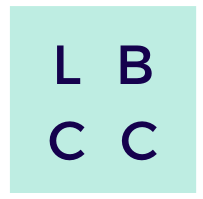Deliver Effective Interview Answers
Interviews are stressful. The fear of the unknown, the pressure of wanting a new job, and let’s face it, the process is inherently judgy. Here is a strategy to help you deliver a strong answer to a behavioral-based interview question.
The STAR, SPAR, SCAR, SOAR Interview Answer Strategy
The acronyms listed below, STAR, SPAR, SCAR, and SOAR represent an outline you can use to answer behavioral interview questions or questions that requires you to give your interviewer an example of your work.
|
S –Situation T –Task A – Action R – Result(s) |
S –Situation P – Problem A – Action R – Result(s) |
S –Situation C – Challenge A – Action R – Result(s) |
S –Situation O – Opportunity A – Action R – Result(s) |
When you are asked a behavioral interview question like:
- Tell me about a time when you worked with a team to accomplish a goal?
- Can you give me an example of a time when you had to deal with a demanding client?
- Can you tell me about a time when you had a disagreement with a co-worker or your supervisor?
You can use one of the outlines above to help you deliver an answer that provides the interviewer with all the important pieces of your story and prevents you from rambling or not saying enough.
Let’s break this down. Imagine the interviewer asks, “This position will require the ability to multitask to meet the demands of competing stakeholders. Can you give me an example of a position you have held that required you to do this?” You could use STAR to outline your answer.
(S) As the Senior Career Counselor at ABC University, the Spring semester was always busy for me and my team.
(T) During this semester, I had to organize three industry-specific career fairs, create classroom presentations for ten different majors, and meet individually with over 100 very stressed Seniors before graduation.
(A) I was able to successfully manage priories in each of these areas by strategically scheduling events and presentations to give myself time in between each event to plan and prepare, and I created weekly and monthly to do list for myself and my team to make sure we were all on track and on the same page. Doing so allowed me to be fully present during my one-on-one student appointments so I could do my best work.
(R) As a result, my events and presentations were well received, and my students felt prepared to begin their job search.
Here is another example. What if the interviewer asks, “Can you give me an example of a time when you made a significant improvement to a process that was already in place?”
example of a time when you made a significant improvement to a process that was already in place?”
(S) As the Office Manager at XYZ Enterprises, I was responsible for supervising a staff of five as they answered inbound emails and phone calls.
(O) I noticed several times per day members of my team were working to answer the same email at the same time. This hindered our productivity and I saw an opportunity to make a small change that would have a big impact.
(A) I developed a color-coding system that would allow my team to identify when an email was in the process of being answered, so they could easily move down the column to the next unopened email.
(R) As a result, we were able to increase the number of inquiries we were able to answer by 25% almost immediately.
In both examples listed above, the STAR and the SOAR strategies allowed me to succinctly explain my skills and highlight the value I added in my previous positions. Next time you are preparing for an interview, think of five to seven strengths you would like to highlight in your interview. Then use STAR, SPAR, SCAR, and SOAR to outline stories or examples of your work in a way that will help your future employer learn more about how your skills, strengths, interests, and experiences can help fulfill their needs.
If you would like to work with a career coach to help you prepare for your next interview, I’d love to hear from you! Click here to schedule a consultation. If you enjoyed this post, scroll down to subscribe and my blog will be sent straight to your inbox 😊!

